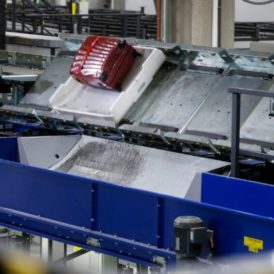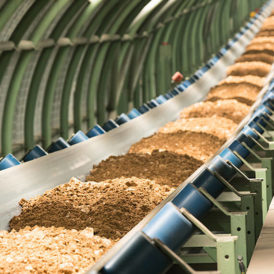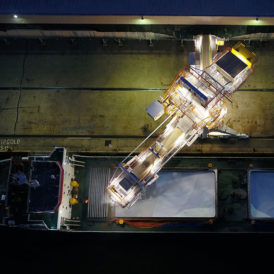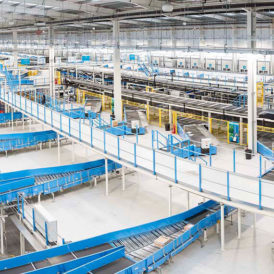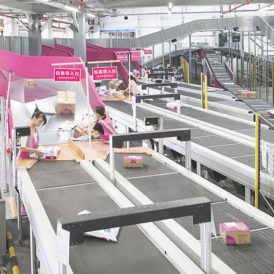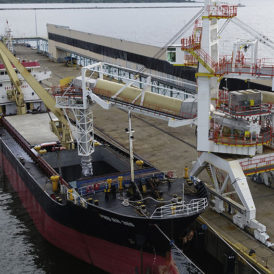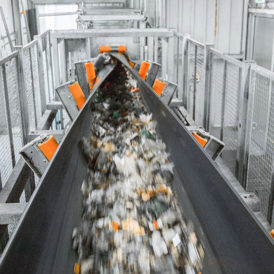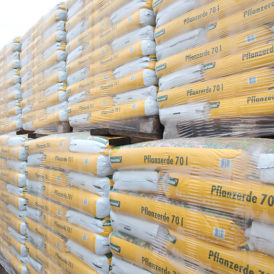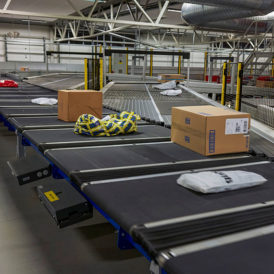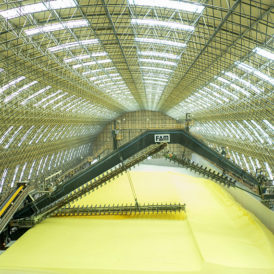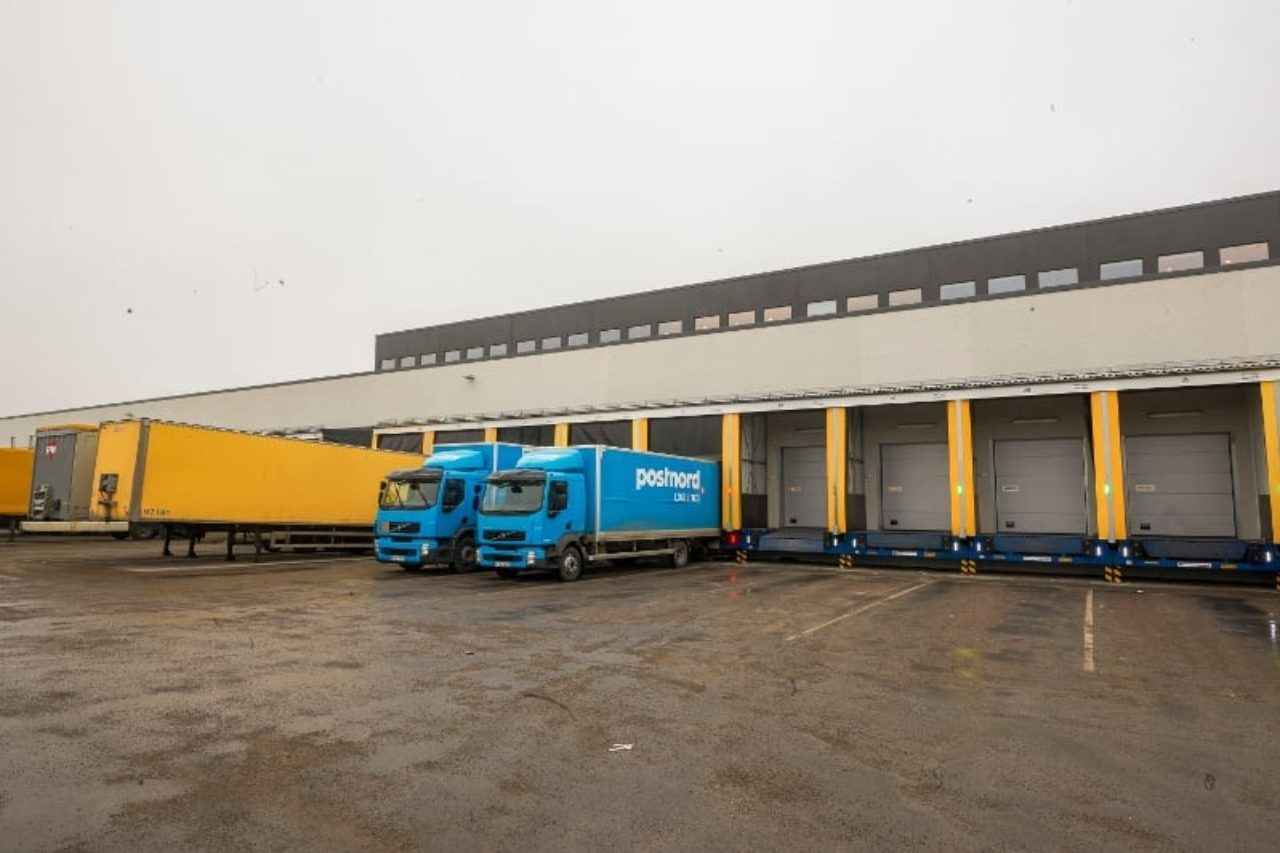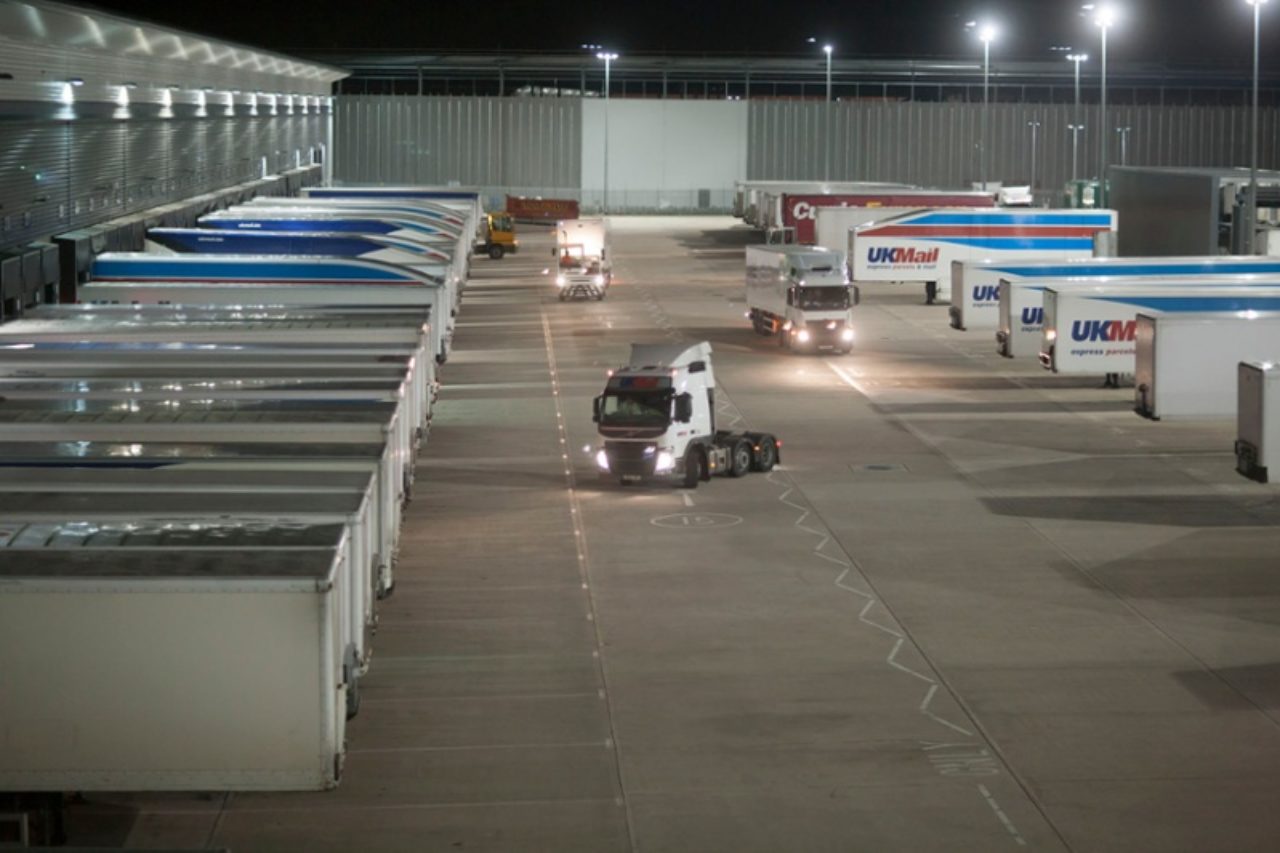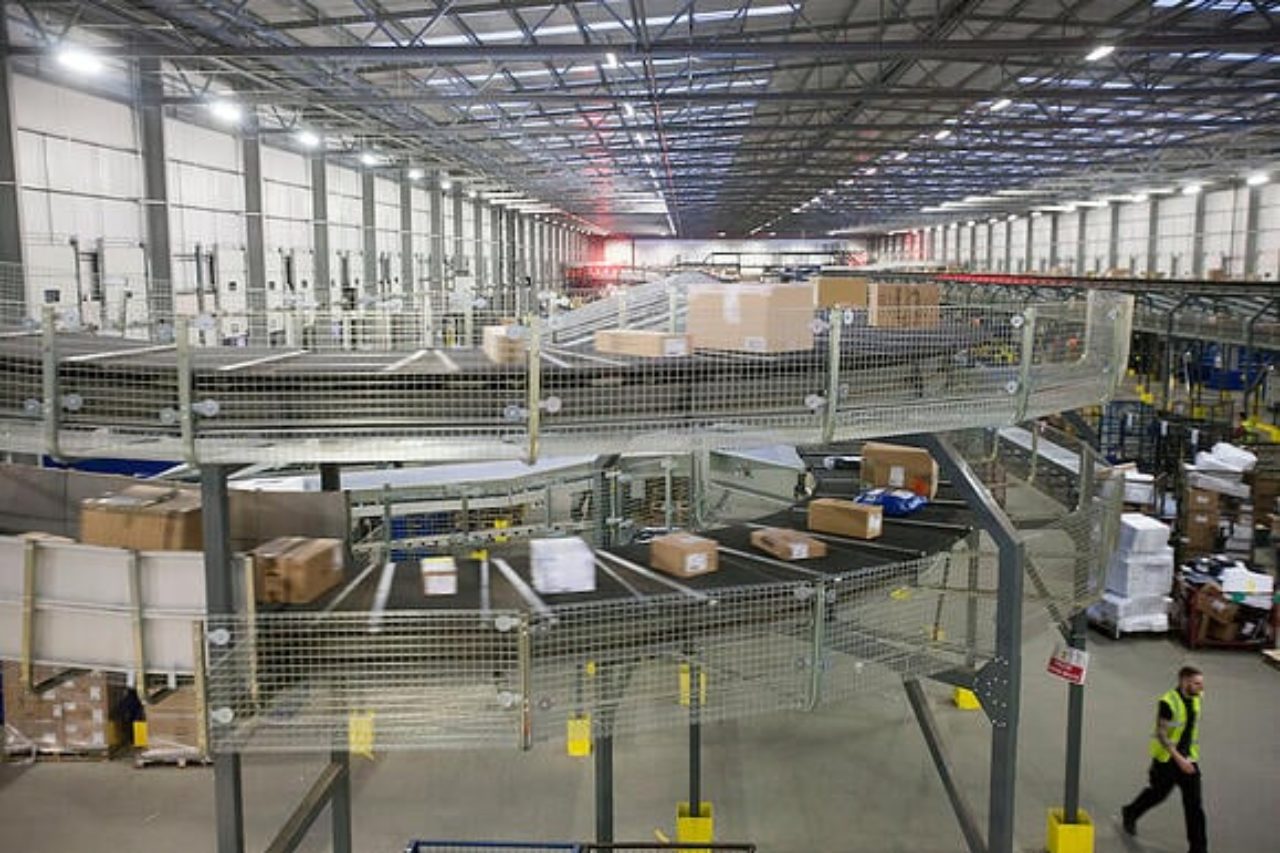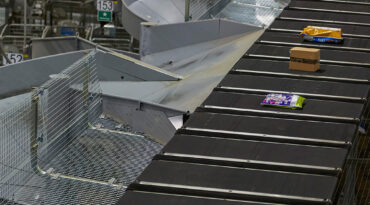At the inbound end of the process, the interconnected systems have allowed UK Mail to optimise its trailer and shunt movements to keep in-feed lines at a constantly busy level. The sorter controls, for example, can notify yard management if the sorter has free capacity so the yard managers can adjust their operations and shunt allocations accordingly. This has allowed UK Mail to achieve a typical swap-over time of just seven minutes, in addition to minimising downtime at the in-feed sections. It has also increased productivity by maintaining full capacity on the sorters.
Integrated control systems also help CEP companies to optimise the costly last mile by reducing yard dwell time, keeping drivers on the road and enabling better allocation of resources.
With the sortation system talking to the yard management system, companies can also eliminate issues such as drivers waiting too long at the gate to be let in by a security guard or having to drive around and look for a spot in the yard.
Data analytics adds to the potential of integrated systems
Innovations in modern sortation systems can be applied to give even greater data-driven insights to CEP managers. Data analytics tools, for example, help CEP companies to further optimise their operations, such as improving throughput, reducing operational risk and lowering costs per parcel. Data analytics solutions can take real-time data from the sortation systems, collecting throughput data from inductions and discharges, re-circulations, discharge failures, scanner performance and alarms.
They can analyse the data to discover trends and patterns, helping operations managers make better and more informed decisions.
For example, control systems leveraging data analytics tools are able to reassign inbound trucks depending on which positions in the feed areas are experiencing low or high loads. Or predict when chutes will be full before discharging items and assign operators to prevent recirculations.
Through different data visualisation dashboards, CEP providers can gain greater transparency into all their processes, enabling them to transform their operations from “what we think we know” to “what we know”.
Takeaway
In our view, the integration of automated sortation systems with other technological opportunities available to distribution centres is another option centres can be looking at to further optimise their overall operations. With greater communication between sortation processes and the other components of the supply chain network, CEP companies will gain superior visibility to their processes, end-to-end, from which they can reduce costs and resources.
